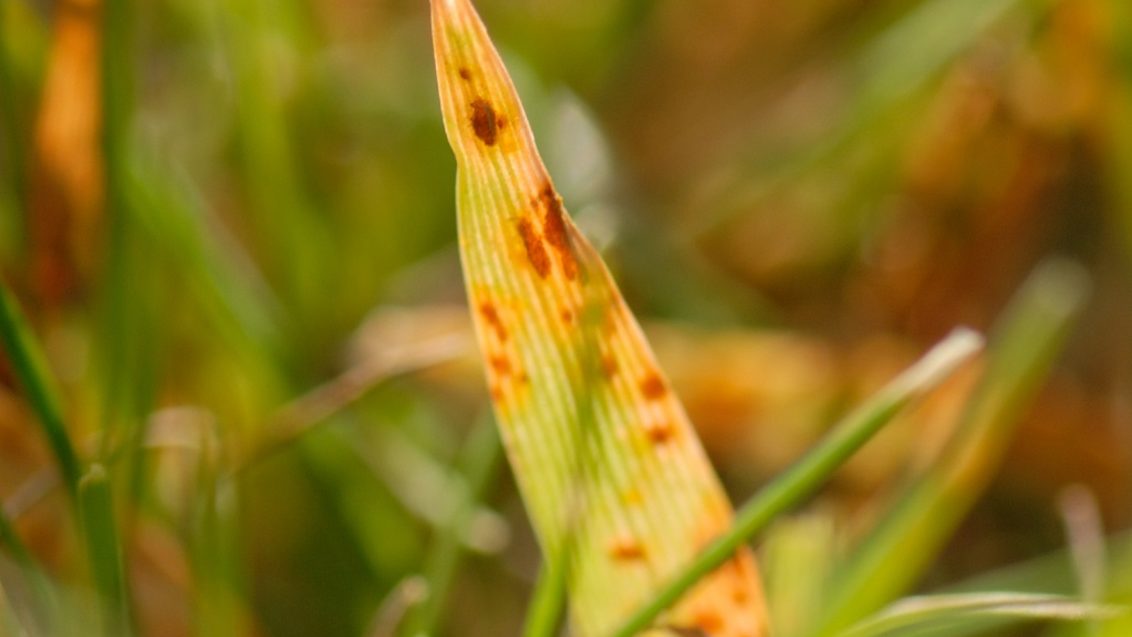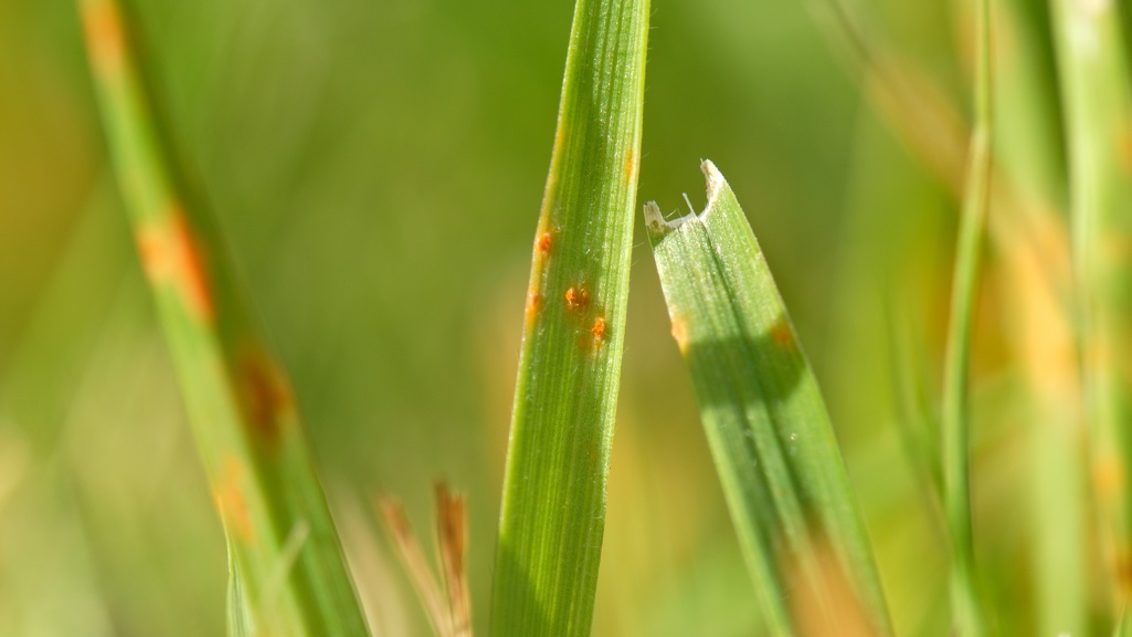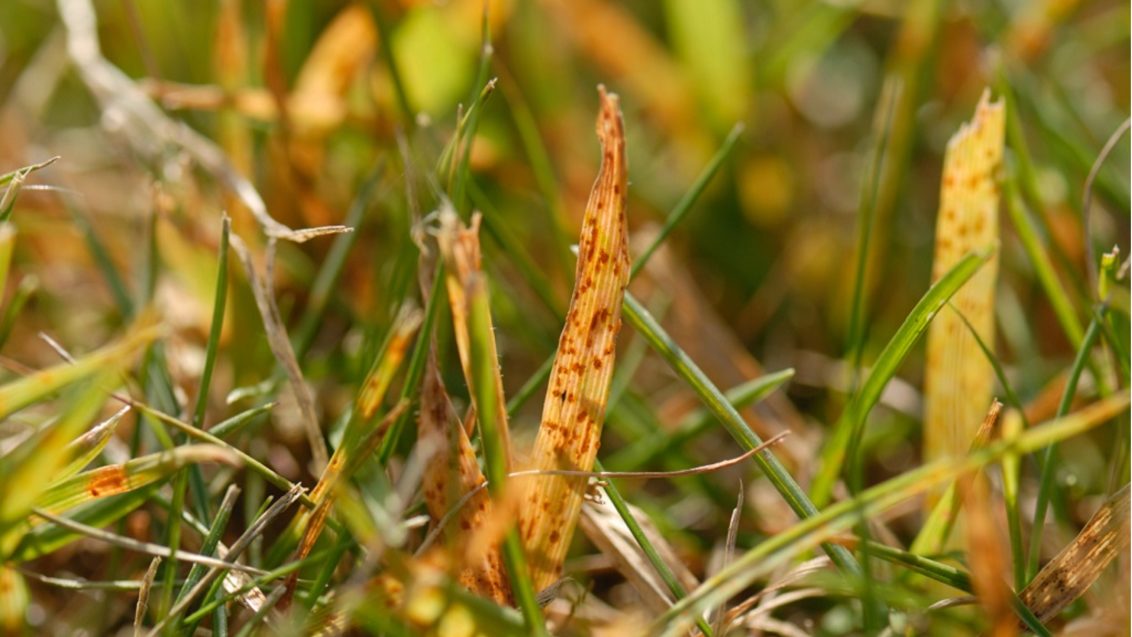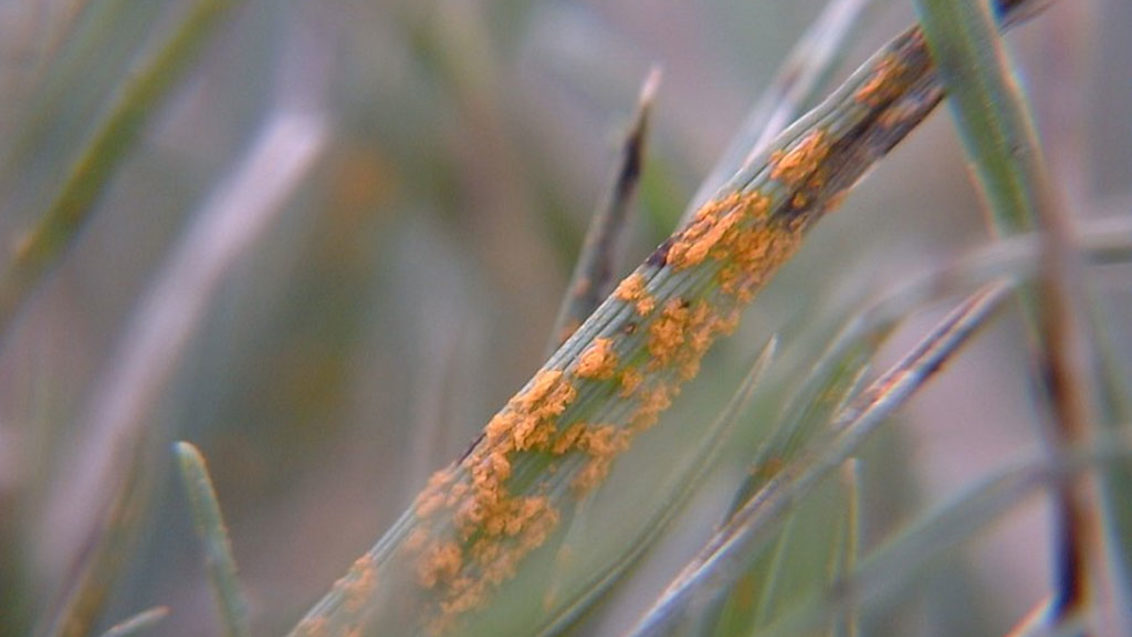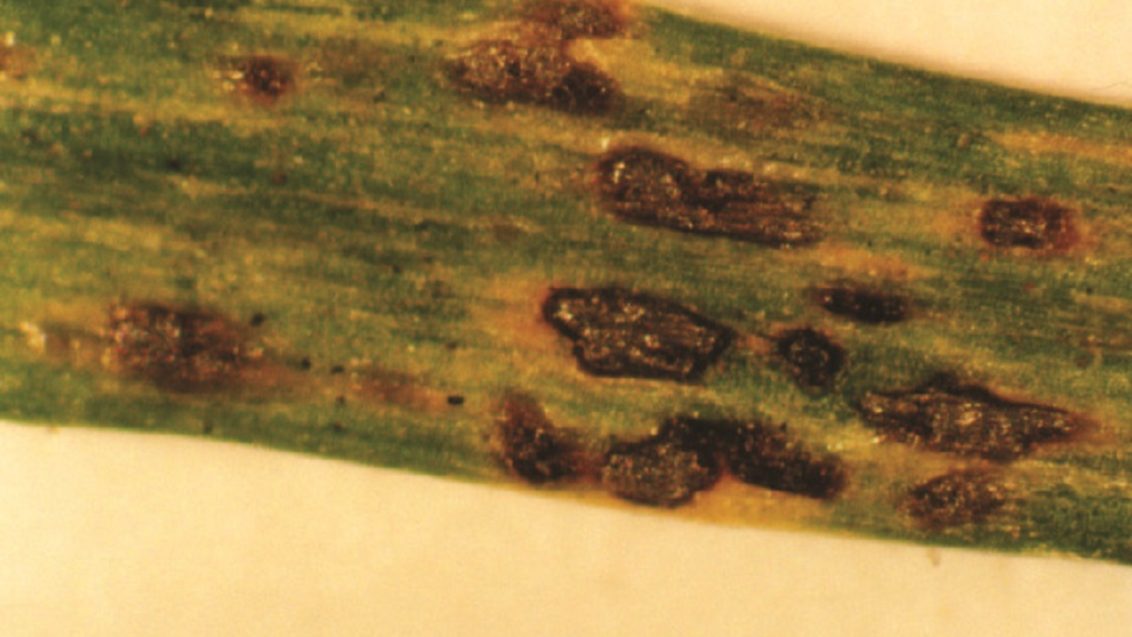Rust
Turf Disease
Rust diseases of the crown, leaf and stem cause light yellow flecks initially on the leaf blades and sheaths. The flecks enlarge, elongate, and turn yellow in colour. The infected areas rise above the epidermis and then rupture, releasing spores that are yellowish-orange to reddish-brown in colour. The leaf blade turns yellow starting at the tip and progressing to the base sheath.
A severe disease infection can cause the shoot to turn yellowish to reddish-brown in colour and slow in growth. The turf may appear thin as individual shoots die.
Causal Agent: Crown-Puccinia coronata; Leaf- Uromyces dactylidis; Stem (Black)-Puccinia graminis; Stripe (Yellow)-Puccinnia striiformis.
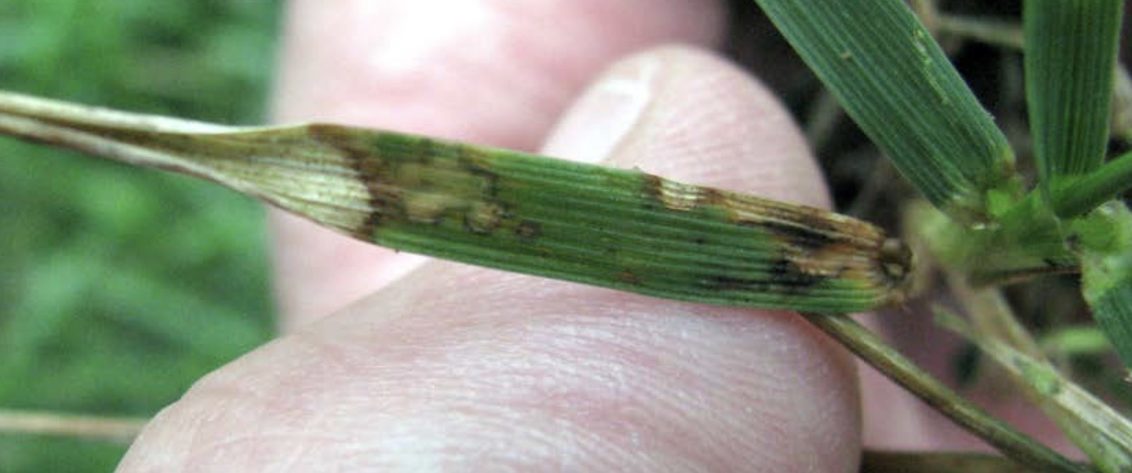
Susceptible Turfgrass: Kentucky Bluegrass, Annual Bluegrass, Ryegrass, Old Bentgrass cultivars, Bermudagrass, and tall and fine Fescue.
Conditions favouring disease:
- Rust diseases typically occur in early Spring through Autumn, depending on the location of the turf.
- Rusts favour moist, low-light areas.
- Depending on the species, rusts favour temperatures between 18°C and 30°C.
- Severe rust infections occur on slow-growing turfgrass, particularly those with low nitrogen levels and/or plant water stress.
Integrated Turf Management:
- Convert to a turfgrass species or cultivar (especially for Kentucky Bluegrass and Perennial Ryegrass) that are resistant to rust diseases found in the area.
- Apply adequate levels of nitrogen.
- Remove clippings from turf.
- Reduce thatch.
- Reduce shade and improve air circulation.
- Regulate irrigation to minimise the amount of time moisture remains on the leaf surface.
- Water deeply and infrequently.
- Use penetrant fungicides to control rust diseases on slow-growing grasses and to grasses that are not mown.
Fungicidal Control:
Banner and Heritage have a label recommendation for Rust in the United Arab Emirates.

